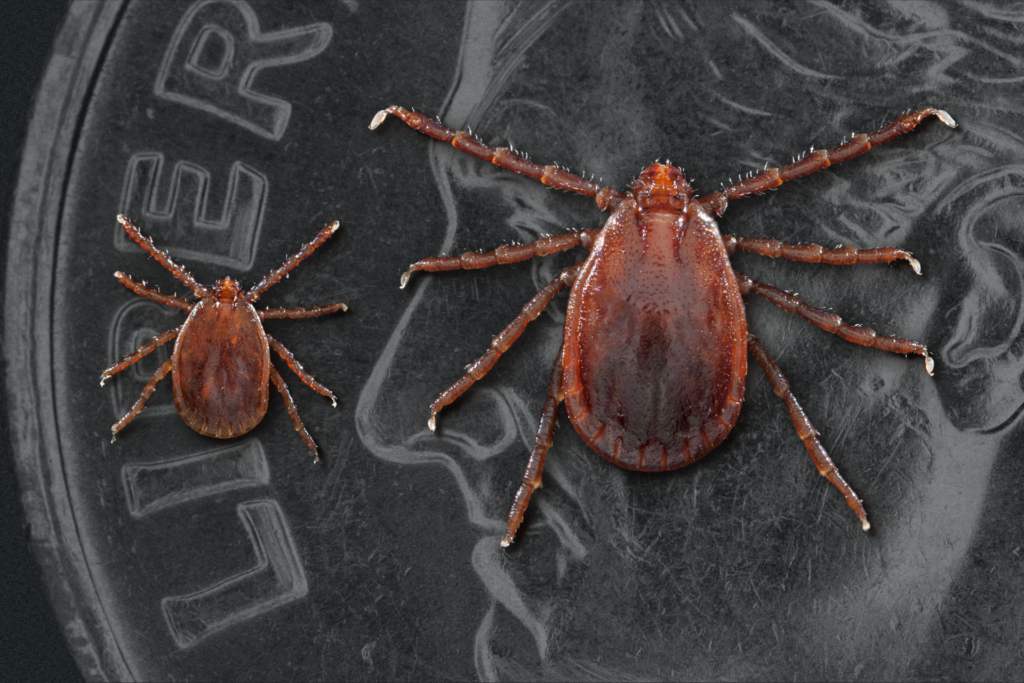Asian longhorned tick, commodity outlooks discussed at Blackland Income Growth Conference
Blackland scholarships presented to area youth
Farmers and ranchers heard updates on the Asian longhorned tick, outlooks on cotton and other major commodities and scholarships awarded to 12 outstanding 4-H members during Texas A&M AgriLife Extension Service’s 61st Blackland Income Growth Conference in Waco.
On lookout for Asian longhorned ticks
Ticks primary to Texas include the Lone Star tick, black-legged tick, winter tick, Gulf Coast tick, brown dog tick and the American dog tick, but producers are being alerted to a potential threat.

The Asian longhorned tick is an exotic tick that has been in the U.S. since 2017. It is native to Japan, China, the Primorsky Krai region of Russia and Korea.
Though not currently in Texas, the Asian longhorned tick could pose a threat to Texas’ beef industry, said Sonja Swiger, Ph.D., AgriLife Extension entomology, Stephenville. An outbreak would add to the $162 million economic hardship ticks already have on the industry.
“Wildlife are bringing ticks closer to us,” Swiger said. “The Asian longhorned tick can have multiple hosts, but needs only one host to feed.
“It likes multiple hosts, but primarily cattle, goats and sheep,” she said. “It was first spotted in New Jersey in 2017 on sheep. The females can reproduce without males and can lay up to 2,000 eggs.”
Swiger said the ticks are also carriers of diseases such as anaplasmosis, Theileria orientalis ikeda and babesiosis, which infect the red blood cells.
“It’s prevalent in the northeast,” Swiger said. “Tennessee is having a real issue with it right now. Deer, racoons, dogs, cows and birds are serving as hosts.”
Swiger advised cattle producers to be on the lookout and exercise caution when introducing newly purchased cattle into herds.
“If you purchase cattle, you check them ahead of time,” she said. “Quarantine them before turning them in with your herd.”
Ranchers can opt for control measures such as prescribed burns on pastures or use pesticide treatments.
“Brush hogging, then applying a spray treatment with pasture-approved products, can be an effective practice,” Swiger said.
Another treatment option is using Prolate/Lintox applied as a whole animal spray. Insecticide ear tags are also a preventive method.
Cotton outlook
In a cotton outlook presentation, John Robinson, Ph.D., AgriLife Extension cotton marketing economist, Bryan-College Station, said current U.S. cotton demand hinges on several important key factors. One is the Federal Reserve and interest rate hikes to curb inflation, which could also curb consumer purchasing.
However, retail pricing data thus far hasn’t shown a real clear picture that purchasing has slowed to a crawl despite interest rate hikes.
“I think the Federal Reserve can slow down purchases, which will certainly affect prices,” he said.
On the bullish side of the price argument, there’s a short supply of cotton, Robinson said. On the bear side of the argument, there’s weak demand. Ending stocks for 2022-23 are at 3.5 million bales compared to 3.75 million bales in 2021-2022.
“There will still be a sense of uncertainty as to how tight of supply the market will be,” Robinson said. “We can expect fewer cotton acres to be planted.”
More than 9 million acres of cotton are predicted to be planted in the U.S. this year.
“But it’s still dry, and a dry start to 2023 suggests tight supplies and a major decline in 2023 planted acres,” Robinson said.
Cotton price projections for 2023 are in the upper range of the mid-80 cents per pound with some optimism of prices eclipsing over 90 cents per pound with economic tailwinds.
Future of agriculture
Don Renchie, Ph.D., AgriLife Extension program leader and coordinator for the pesticide safety education program, Bryan-College Station, was the keynote luncheon speaker.
Renchie stressed the importance of educating the younger generation about agriculture and keeping family land operations in agricultural production.

“You can’t take it with you, but you can leave it behind,” he said. “If you are not producing for yourself, you are dependent on others.”
He pointed to California where residents are selling high-priced real estate and moving to Texas. That has fueled Texas’ population to surpass 30 million people, according to the latest U.S. Census Bureau report.
Renchie highlighted escalating land values across Texas as the state has seven of the 15 fastest growing cities. Urban sprawl continues to threaten traditional agriculture in Texas, though the Lone Star state leads the nation in number of farms and ranches with 248,416 farms.
The economic impact of Texas food and fiber totals $100 billion with 86% of the land in Texas in some form of agricultural production.
Youth scholarships
The Blackland Income Growth program annually awards scholarships to outstanding 4-H members in Blackland counties. The following are this year’s recipients:
- Grace Real, Denton County.
- Catelyn Tyler, Bell County.
- Thiele Alvarado, Coryell County.
- Jack Bussey, Coryell County.
- Macie Wimbish, Ellis County.
- Jocelyn Kolar, Hill County.
- Colby Crow, McLennan County.
- Lansty Mitchell, McLennan County.
- J.L. Singer, McLennan County.
- Colton Barbo, Milam County.
- Conner Ryan Barbow, Milam County.,
- Ellee Spearman, Rockwall County.


